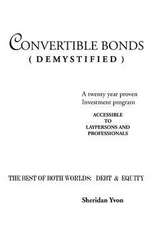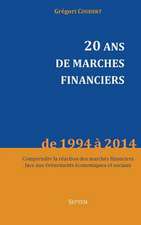Finance: A Quantitative Introduction
Autor Piotr Staszkiewicz, Lucia Staszkiewiczen Limba Engleză Paperback – 8 dec 2014
- Chapter-concluding questions (with answers) and case studies enhance its utility as a textbook and a reference
- Mixture of theory and problem-solving contains enough mathematical tools to help readers assess facts and evaluate real data in practical tasks
- Short, simple presentation is perfect for non-native English speakers
| Toate formatele și edițiile | Preț | Express |
|---|---|---|
| Paperback (2) | 225.14 lei 5-7 săpt. | |
| ELSEVIER SCIENCE – 8 dec 2014 | 225.14 lei 5-7 săpt. | |
| ELSEVIER SCIENCE – 8 dec 2014 | 225.23 lei 5-7 săpt. |
Preț: 225.14 lei
Nou
Puncte Express: 338
Preț estimativ în valută:
43.08€ • 45.07$ • 35.79£
43.08€ • 45.07$ • 35.79£
Carte tipărită la comandă
Livrare economică 26 martie-09 aprilie
Preluare comenzi: 021 569.72.76
Specificații
ISBN-13: 9780128027974
ISBN-10: 0128027975
Pagini: 186
Dimensiuni: 152 x 229 x 11 mm
Greutate: 0.27 kg
Editura: ELSEVIER SCIENCE
ISBN-10: 0128027975
Pagini: 186
Dimensiuni: 152 x 229 x 11 mm
Greutate: 0.27 kg
Editura: ELSEVIER SCIENCE
Public țintă
Undergraduates, graduate students, and professionals working in finance, economics, business management, marketing, accounting, and related subjects.Cuprins
Introduction
1. Financial Markets and the Economy
2. Market Participants
3. Fundamentals of Pricing of Financial Instruments
4. Hypothesis of Informational Efficiency
5. Financial Information
6. Risk and Return Assessment
7. Money Market and Liquidity Management
8. Fixed Income Instruments
9. Bond Assessment
10. Risidual Right Instruments
11. Portfolio Theory
12. Active and Passive Portfolio Management
13. Derivatives
14. Cost of Capital
15. Investment and Financial Strategies
16. Financial Crisis and Supervision Over Stability
Conclusion
Appendix A: Time Value of Money
Appendix B: Business Arithmetics
1. Financial Markets and the Economy
2. Market Participants
3. Fundamentals of Pricing of Financial Instruments
4. Hypothesis of Informational Efficiency
5. Financial Information
6. Risk and Return Assessment
7. Money Market and Liquidity Management
8. Fixed Income Instruments
9. Bond Assessment
10. Risidual Right Instruments
11. Portfolio Theory
12. Active and Passive Portfolio Management
13. Derivatives
14. Cost of Capital
15. Investment and Financial Strategies
16. Financial Crisis and Supervision Over Stability
Conclusion
Appendix A: Time Value of Money
Appendix B: Business Arithmetics

























